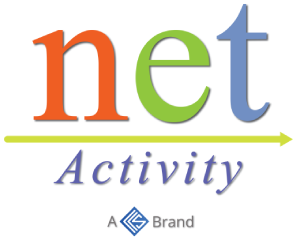5 Modern Cyber Threats You Need To Know About in Your Business
Cybersecurity is a critical part of managing any business. This is especially true nowadays when there are countless individuals and organizations formed specifically to steal credentials and sensitive information from your organization. Today we will be dedicating some time to how your business can reinforce proper cybersecurity practices.
Shadow IT
Time is money, and people will go to great lengths to keep themselves productive throughout the workday, even if it’s not sanctioned by your business. While you might have certain preferences for solutions, your employees might have other ideas. This is called Shadow IT, where your employees will download and use a piece of software that hasn’t passed the test of your company’s IT department. Most of the time, the employee who downloads the off-brand software isn’t doing it out of spite for the organization–only for their own convenience. In fact, 80 percent of employees use software that hasn’t been selected, tested, and released by the IT administrator. These applications are more vulnerable than those that would be implemented by your business.
Cryptojacking
There are over 1,500 kinds of cryptocurrency out there, and cryptojacking was a popular method of cybercrime in 2018. Cryptojacking is when a malware will use a target’s computer resources to mine for cryptocurrency. Due to how resource-intensive cryptojacking is, it affects the computer’s effectiveness and longevity. Most studies that have been performed as of late show that cryptojacking will get much worse in 2019, as the value of cryptocurrency has fallen considerably over the past year. This means that more machines are needed to mine cryptocurrency, which means more attacks will be needed to create the same level of profit. You should take measures now to learn about these attacks and how to keep them from becoming a problem for your business.
Ransomware
Ransomware might be on the decrease since 2018, it’s still important to keep a lookout for it, primarily because it’s such a huge danger to network security. Ransomware is capable of encrypting all of the files located on a computing system. It then demands payment to unlock access to the files. Ransomware tends to target organizations that have a lot of sensitive files who are likely to pay up in the event of an infection. Others might have operational technology systems that are critical to maintain at all times, making restoration a priority–even if it means paying up.
Unsecured Internet of Things Devices
The IoT is only growing larger, and you know what that means: more devices that could potentially create a disaster scenario for your business. It becomes incredibly important to keep your network safe from any and all devices connected to it at any given time, whether it’s from employees or visitors. Even a simple unsecured IoT device with smartphone connectivity could become a major network vulnerability. To be fair, there have been improvements to IoT security, so you’ll have plenty of options over how to utilize IoT devices securely and effectively.
Phishing
All businesses see a phishing email at least once in a while. It’s estimated that an average of 156 million phishing emails are sent every day, making it a very common method of hacking. Basically, since most accounts are secure enough that they cannot be hacked through conventional means, the hacker will instead directly reach out to whoever owns the account to get the information they need to infiltrate it. One specific example of this is business email compromise, which targets specific members of an organization and can cause up to $12 billion in losses all over the world. Most phishing messages can be stopped with powerful spam filters, but it’s also important to educate your employees on what to watch out for in a phishing email. In fact, some scams will use text messaging, instant messaging, and even phone calls to get what they’re after.
2019 promises to be a great year for business technology, but are you prepared to keep it all secure? To find out, reach out to us at 216-503-5150.




